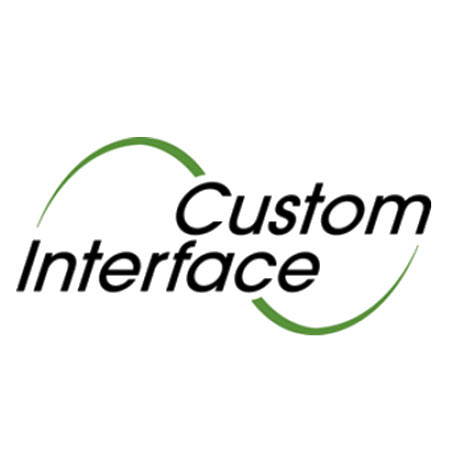JIT Manufacturing vs Supply Chain Disruptions
Has the definition of “Just-In-time Manufacturing” changed with new market conditions?
While many...
CALL: (509) 493-8756
-----------
SUBSCRIBE TO OUR BLOG >> | SURPLUS INVENTORY >>

Supply chain disruption has been a major challenge for manufacturers over the past several years, and delays are far from being resolved. According to the Institute for Supply Management, lead times for capital equipment and supplies reached record levels in 2022. Some production materials that took an average of 67 days to arrive in 2021 had increased to 97 days or longer.
Another issue we are commonly seeing with suppliers goes beyond missed delivery dates. It's a complete lack of transparency in the system. Little to no communication from suppliers means it's difficult to gauge whether items will arrive early, on time, late, or not at all.
Some suppliers cite a lack of raw materials, labor shortages, or equipment bottlenecks as the cause of their missed commit dates. Even as the economy began returning to normal volumes, this has been a frequent occurrence.
Across a wide spectrum of industries, companies have been trying to get a handle on various supply chain troubles. A report from Avnet consultants last year determined that more than 60% of airtime on earnings calls across all industries in 2022 was spent discussing supply chain concerns. And, for the first time, supply chain issues were listed on 100% of earnings call agendas, whether it be electronics components manufacturing, food and beverage production, oil & gas, automotive, or some other industry.
The shortages in metals are impacting suppliers of connectors and wire/cable. Additionally, factory labor shortages impact lead times. For example, one plating factory's lead time tripled due to a lack of workers, which then impacted the connector manufacturer.
There were hopes that supply chain issues would start to abate sometime in 2022 as the effects of the pandemic became more controlled in many countries. But the pandemic continued, and other events, such as the war in Ukraine and major weather disruptions, have added fresh bottlenecks.
Many experts opine that supply chain issues will be the "new normal" for businesses, although there may be some relief on the horizon in the next year or two. But what can you do now and moving forward to continue serving your customers and ensuring the survival and growth of your business? Here are just a few ways you can simplify your supply chain and mitigate risks.
If your end product design isn't likely to change, Stocking Programs can mitigate a lot of supply chain risks. Both the Contract Manufacturer (CM) and the manufacturer are usually willing to hold inventory, whether it be raw materials or finished goods. The typical duration of a stocking agreement is up to 12 months. These contracts can be customized to fit the customers' needs and result in a significant reduction in lead times.
When you require unique parts and assemblies for every product you produce, this complicates your supply chain and manufacturing processes. Another way to simplify your business and reduce risk is by finding ways to consolidate. Assemblies with the same or similar end installation group can often be consolidated into installation kits or box builds. This can greatly alleviate the burden on procurement and reduce the number of parts that must be purchased.
Installation kits — If various different harnesses and/or other loose components are used in the same end product, consider creating a top-level installation kit that encompasses those materials.
Box builds — If the CM has box build capabilities, consider contracting out the next level assembly, which could consolidate hundreds of individual components into a single purchased part.
The pandemic has all but killed the idea of just-in-time inventory, at least for the foreseeable future. It's no longer feasible to count on materials showing up "just" when you need them because delays and other supply chain roadblocks remain so widespread.
To mitigate this situation Custom Interface has begun kitting 2-3 weeks ahead of the scheduled production start date. This strategy also drives demand out the same number of weeks, which creates a buffer for late deliveries.
Some clients are also purchasing long lead time components before going out to bid with CMs. This strategy can take 4-6 weeks off production lead times if those components are then made available to the CM that gets awarded the contract.
Be particularly aware of risks that your traditional suppliers may face, including country risk, shipping constraints, regulatory issues, materials and labor shortages, political and economic conditions, and anything else that may impact their ability to serve your needs.
While it was once cost-effective to purchase supplies overseas, this is no longer the best strategy. On-shoring your supplies and manufacturing eliminates many supply chain issues, reduces delays, and allows for easier collaboration with your production team.
Another supply chain risk mitigation strategy we recommend involves contract language. Specifically, we recommend that designers add language to their drawings authorizing the substitution of approved equivalents so that drawing changes are not needed if a significant supply chain issue arises.
The race to fully digitize the supply chain is gaining momentum. This isn't to say that you'll have robots producing your materials and drones delivering them. Instead, many businesses are investing in solutions that automate some repetitive tasks and provide real-time tracking for materials to improve overall visibility.
The importance of supply chain resilience has become paramount for businesses in an increasingly turbulent environment. One of the things your business can do is focus on expanding its supplier network and improving relations with existing suppliers.
Traditional supplier relationship models are outdated because they don't take into account the supplier's ecosystem. In fact, many of the delays that took place during the pandemic were due to secondary issues with suppliers, which weren't even tracked. By strengthening relationships and injecting more visibility throughout the supply chain, businesses can reduce these risks.
This progress starts with communication. For example, we call suppliers several weeks ahead of expected delivery dates to confirm that they are on track to meet their commitments. It's important that you ask suppliers to implement solutions that will be mutually beneficial. Some of our larger distributors routinely send shipping confirmation, which reduces our workload by confirming delivery dates.
There's nothing simple about today's supply chains. Whether your business is developing a time-sensitive prototype or launching production of a product requiring custom wire/cable harnesses, you need a partner you can trust.
Since 1997, Custom Interface Inc. has specialized in helping customers in a variety of industries develop robust solutions that hold up in the harshest environments. If you need help implementing a supply chain solution for your cabling and wiring harness needs, reach out to us.

Hayden leads Custom Interface’s sales engineering team with over 6 years of expertise in wire harness and PCBA manufacturing. At Custom Interface, Hayden assists customers with onboarding & new product design, manufacturability consulting, and CAD drafting services. He specializes in solving wire routing issues and "spaghetti messes".

While many...

There are high-end consumer products that require the quality standards of aerospace, but with...
Leave a Comment